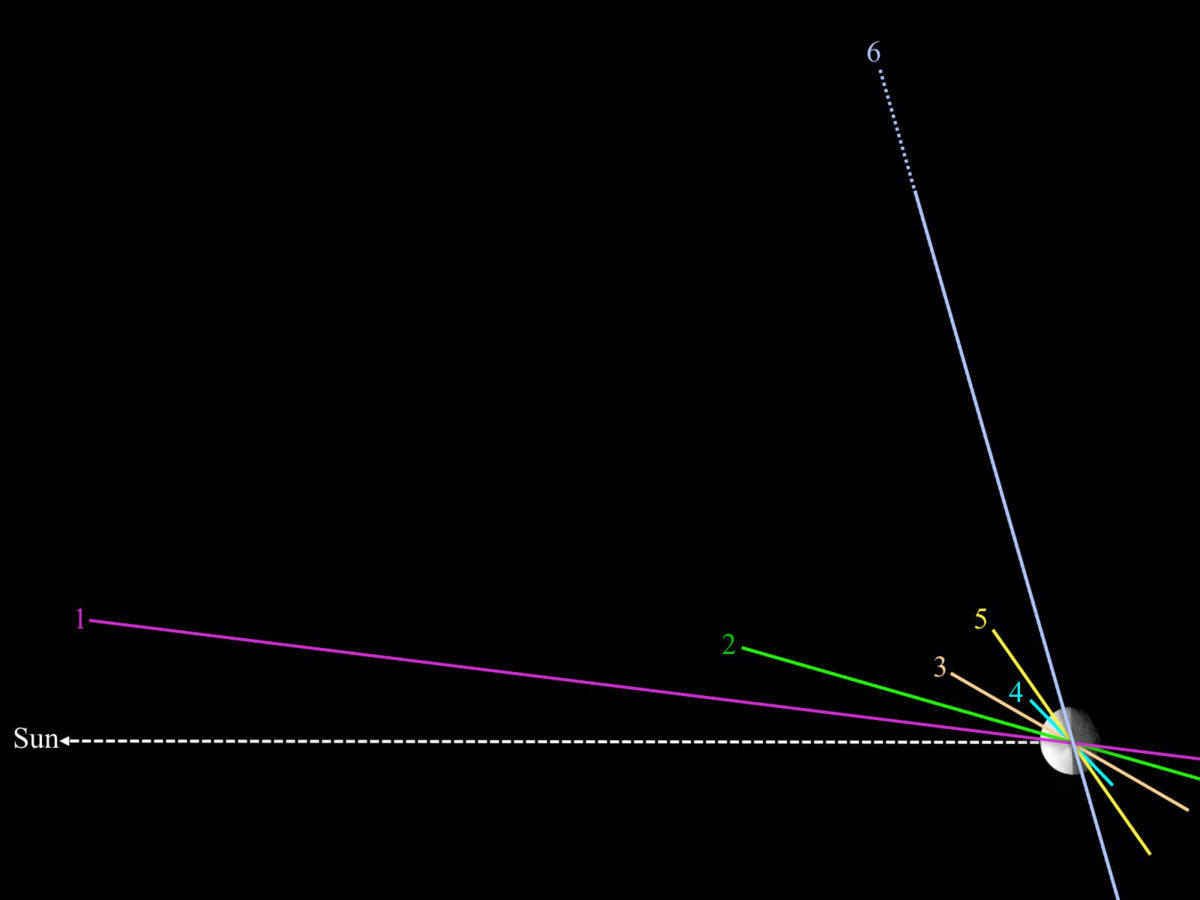Marc Rayman • Jan 03, 2017
Dawn Journal: Looking Back, Looking Forward
Dear Dawnimations,
Dawn is concluding a remarkable year of exploring dwarf planet Ceres. At the beginning of 2016, the spacecraft was still a newcomer to its lowest altitude orbit (the fourth since arriving at Ceres in March 2015), and the flight team was looking forward to about three months of exciting work there to uncover more of the alien world’s mysteries.
As it turned out, Dawn spent more than eight months conducting an exceptionally rewarding campaign of photography and other investigations, providing a richly detailed, comprehensive look at the extraterrestrial landscapes and garnering an extraordinary bounty of data. In September, the craft took advantage of its advanced ion propulsion system to fly to a new orbit from which it performed still more unique observations in October. Last month, the ship took flight again, and now it is concluding 2016 in its sixth science orbit.
Dawn is in an elliptical orbit, sailing from about 4,670 miles (7,520 kilometers) up to up to almost 5,810 miles (9,350 kilometers) and back down. It takes nearly eight days to complete each orbital loop. Flying this high above Ceres allows Dawn to record cosmic rays to enhance the nuclear spectra it acquired at low altitude, improving the measurements of atomic constituents down to about a yard (meter) underground.
The spacecraft has been collecting cosmic ray data continuously since reaching this orbit (known to the Dawn team, imaginative readers of last month’s Dawn Journal and now you as extended mission orbit 3, or XMO3). These measurements will continue until the end of the extended mission in June. But there is more in store for the indefatigable adventurer than monitoring space radiation.
Based on studies of Dawn’s extensive inspections of Ceres so far, scientists want to see certain sites at new angles and under different illumination conditions. Next month, Dawn will begin a new campaign of photography and visible spectroscopy. All of Dawn’s five previous science orbits had different orientations from the sun. And now XMO3 will provide another unique perspective on the dwarf planet's terrain. The figure below shows what the orientation will be when the explorer turns its gaze once again on Ceres for the first set of new observations on Jan. 27, 2017.

We mentioned in the figure caption that the alignments are simplified. One of the simplifications is that some of the orbits covered a range of angles. There is a well-understood and fully predictable natural tendency for the angle to increase. In some phases of the mission, the flight team allows that, and in others they do not, depending on what is needed for the best scientific return. At the lowest altitude (orbit 4 in the diagram, and sometimes known as LAMO, XMO1 or "the lowest orbit"), navigators held the orbit at a fixed orientation. Had they not done so, it would have changed quite dramatically over the course of the eight months Dawn was there. For XMO3, the team has decided not to keep the angle constant. Therefore, later observations will provide still different views. We will return to this topic in a few months.
We have described before how places that remain shadowed throughout the Cerean year can trap water molecules. Dawn’s pictures have revealed well over 600 craters high in the northern hemisphere that are permanently in darkness, covering more than 800 square miles (more than 2,000 square kilometers). (It has not been possible to make as thorough a census of the southern hemisphere, because it has been fall and winter there during most of Dawn’s studies, so some areas were not lit well enough. Now that spring has come, new photography will tell us more.)

Dawn peered into craters to see what was hidden on the dark floors. Long exposures could reveal hints of the scenery using the faint light reflected from crater walls. In 10 of the craters, scientists found bright deposits. In one of those craters, the reflective material extends beyond the permanent shadow and so is occasionally illuminated, albeit still with the sun very low on the horizon. And sure enough, right there, Dawn’s infrared mapping spectrometer found the characteristic fingerprint of ice. These shadowed crater floors accumulate water that happens to land there, preserving it in a deep freeze that may be colder than -260°F (-163°C). Readers are invited to formulate their own business plans for how best to utilize that precious resource.

Jan. 1 is the anniversary of the discovery of Ceres. When Giuseppe Piazzi spotted the faint smudge of light in his telescope that night in 1801, he did not know that it would be known as a planet for almost two generations. (After all, he was an astronomer and mathematician, not a clairvoyant.) And he could never have imagined that more than two centuries later (by which time Ceres was known as a dwarf planet, reflecting progress in scientific knowledge), humankind would undertake an ambitious expedition to explore it, dispatching a sophisticated ship to take up residence at that distant and mysterious place. What Piazzi discovered was a lovely jewel set against the deep blackness of space and surrounded by myriad other gleaming stellar jewels. What Dawn has discovered is a unique and fascinating world of complex geology, composed of rock and ice and salt, with exotic and beautiful scenery. And as Dawn continues to build upon Piazzi’s legacy, unveiling Ceres’ secrets, everyone who has ever looked in wonder at the night sky, everyone who has ever hungered for new understanding, everyone who has ever felt the lure of a thrilling adventure far from home and everyone who has ever yearned to know the cosmos will share in the rewards.
Dawn is 5,640 miles (9,070 kilometers) from Ceres. It is also 2.43 AU (226 million miles, or 364 million kilometers) from Earth, or 915 times as far as the moon and 2.48 times as far as the sun today. Radio signals, traveling at the universal limit of the speed of light, take 41 minutes to make the round trip.
Dr. Marc D. Rayman
4:00 p.m. PST December 29, 2016
The Time is Now.
As a Planetary Defender, you’re part of our mission to decrease the risk of Earth being hit by an asteroid or comet.
Donate Today

 Explore Worlds
Explore Worlds Find Life
Find Life Defend Earth
Defend Earth

